WarGames for real: How one 1983 exercise nearly triggered WWIII
From the archives: Say hello to the KGB software model that forecasted mushroom clouds.
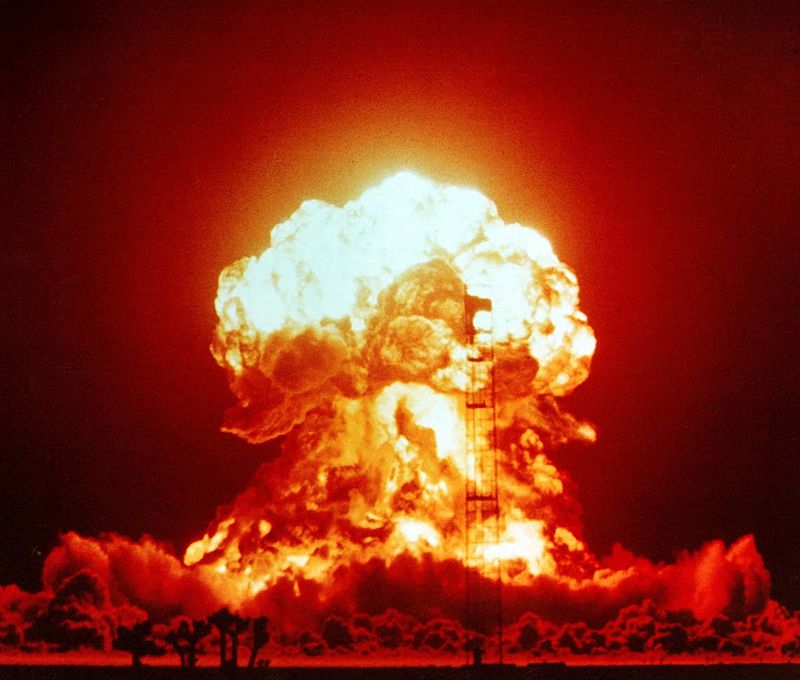
Update, 11/29/20: It's a very different Thanksgiving weekend here in 2020, but even if tables were smaller and travel non-existent, Ars staff is off for the holiday in order to recharge, take a mental afk break, and maybe stream a movie or five. But five years ago around this time, we were following a newly declassified government report from 1990 that outlined a KGB computer model... one that almost pulled a WarGames, just IRL. With the film now streaming on Netflix (thus setting our off day schedule), we thought we'd resurface this story for an accompanying Sunday read. This piece first published on November 25, 2015, and it appears unchanged below.
"Let's play Global Thermonuclear War."
Thirty-two years ago, just months after the release of the movie WarGames, the world came the closest it ever has to nuclear Armageddon. In the movie version of a global near-death experience, a teenage hacker messing around with an artificial intelligence program that just happened to control the American nuclear missile force unleashes chaos. In reality, a very different computer program run by the Soviets fed growing paranoia about the intentions of the United States, very nearly triggering a nuclear war.
The software in question was a KGB computer model constructed as part of Operation RYAN (РЯН), details of which were obtained from Oleg Gordievsky, the KGB's London section chief who was at the same time spying for Britain's MI6. Named for an acronym for "Nuclear Missile Attack" (Ракетное Ядерное Нападение), RYAN was an intelligence operation started in 1981 to help the intelligence agency forecast if the US and its allies were planning a nuclear strike. The KGB believed that by analyzing quantitative data from intelligence on US and NATO activities relative to the Soviet Union, they could predict when a sneak attack was most likely.
As it turned out, Exercise Able Archer '83 triggered that forecast. The war game, which was staged over two weeks in November of 1983, simulated the procedures that NATO would go through prior to a nuclear launch. Many of these procedures and tactics were things the Soviets had never seen, and the whole exercise came after a series of feints by US and NATO forces to size up Soviet defenses and the downing of Korean Air Lines Flight 007 on September 1, 1983. So as Soviet leaders monitored the exercise and considered the current climate, they put one and one together. Able Archer, according to Soviet leadership at least, must have been a cover for a genuine surprise attack planned by the US, then led by a president possibly insane enough to do it.
While some studies, including an analysis some 12 years ago by historian Fritz Earth, have downplayed the actual Soviet response to Able Archer, a newly published declassified 1990 report from the President's Foreign Intelligence Advisory Board (PFIAB) to President George H. W. Bush obtained by the National Security Archive suggests that the danger was all too real. The document was classified as Top Secret with the code word UMBRA, denoting the most sensitive compartment of classified material, and it cites data from sources that to this day remain highly classified. When combined with previously released CIA, National Security Agency (NSA), and Defense Department documents, this PFIAB report shows that only the illness of Soviet leader Yuri Andropov—and the instincts of one mid-level Soviet officer—may have prevented a nuclear launch.Advertisement
The balance of paranoia
As Able Archer '83 was getting underway, the US defense and intelligence community believed the Soviet Union was strategically secure. A top-secret Defense Department-CIA Joint Net Assessment published in November of 1983 stated, "The Soviets, in our view, have some clear advantages today, and these advantages are projected to continue, although differences may narrow somewhat in the next 10 years. It is likely, however, that the Soviets do not see their advantage as being as great as we would assess."
The assessment was spot on—the Soviets certainly did not see it this way. In 1981, the KGB foreign intelligence directorate ran a computer analysis using an early version of the RYAN system, seeking the "correlation of world forces" between the USSR and the United States. The numbers suggested one thing: the Soviet Union was losing the Cold War, and the US might soon be in a strategically dominant position. And if that happened, the Soviets believed its adversary would strike to destroy them and their Warsaw Pact allies.
This data was everything the leadership expected given the intransigence of the Reagan administration. The US' aggressive foreign policy in the late 1970s and early 1980s confused and worried the USSR. They didn't understand the reaction to the invasion of Afghanistan, which they thought the US would just recognize as a vital security operation.
The US was even funding the mujaheddin fighting them, "training and sending armed terrorists," as Communist Party Secretary Mikhail Suslov put it in a 1980 speech (those trainees including a young Saudi inspired to jihad by the name of Osama bin Laden). And in Nicaragua, the US was funneling arms to the Contras fighting the Sandinista government of Daniel Ortega. All the while, Reagan was refusing to engage the Soviets on arms control. This mounting evidence convinced some in the Soviet leadership that Reagan was willing to go even further in his efforts to destroy what he would soon describe as the "evil empire."
USSR had plenty of reason to think the US also believed it could win a nuclear war. The rhetoric of the Reagan administration was backed up by a surge in military capabilities, and much of the Soviet military's nuclear capabilities were vulnerable to surprise attack. In 1983, the United States was in the midst of its biggest military buildup in decades. And thanks to a direct line into some of the US' most sensitive communications, the KGB had plenty of bad news to share about that with the Kremlin.
FURTHER READING 50 years to orbit: Dream Chaser’s crazy Cold War backstory
The seaborne leg of the Soviet strategic force was especially vulnerable. The US Navy's SOSUS (sound surveillance system), a network of hydrophone arrays, tracked nearly every Russian submarine that entered the Atlantic and much of the Pacific, and US antisubmarine forces (P-3 Orion patrol planes, fast attack subs, and destroyers and frigates) were practically on top of, or in the wake of, Soviet ballistic missile subs during their patrols. The US had mapped out the "Yankee Patrol Boxes" where Soviet Navaga-class (NATO designation "Yankee") ballistic missile subs stationed themselves off the US' east and west coasts. Again, the Soviets knew all of this thanks to the spy John Walker, so confidence in their sub fleet's survivability was likely low.Advertisement
The air-based leg of the Soviet triad was no better off. By the 1980s, the Soviet Union had the largest air force in the world. But the deployment of the Tomahawk cruise missile, initial production of the US Air Force's AGM-86 Air Launched Cruise Missile, and the pending deployment of Pershing II intermediate range ballistic missiles to Europe meant that NATO could strike at Soviet air fields with very little warning. Unfortunately, the Soviet strategic air force needed as much warning as it could get. Soviet long-range bombers were "kept at a low state of readiness," the advisory board report noted. Hours or days would have been required to get bombers ready for an all-out war. In all likelihood, the Soviet leadership assumed their entire bomber force would be caught on the ground in a sneak attack and wiped out.
Even theater nuclear forces like the RSD-10 Pioneer—one of the weapons systems that prompted the deployment of the Pershing II to Europe—were vulnerable. They generally didn't have warheads or missiles loaded into their mobile launcher systems when not on alert. The only leg not overly vulnerable to a first strike by NATO was the Soviets' intermediate and intercontinental ballistic missile (ICBM) force. Its readiness was in question, however. According to the 1990 briefing paper by the PFIAB, about 95 percent of the Soviet ICBM force was ready to respond to an attack alert within 15 minutes during the early 1980s. The silo-based missiles were out of range of anything but US submarine-launched and land-based ballistic missiles.
The viability of the ICBM force as a response to sneak attack was based entirely on how much warning time the Soviets had. In 1981, they brought a new over-the-horizon ballistic missile early warning (BMEW) radar system on-line. One year later, the Soviets activated the US-KS nuclear launch warning satellite network, known as "Oko" (Russian for "eye"). These two measures gave the Soviet command and control structure about 30 minutes' warning of any US ICBM launch. But the deployment of Pershing II missiles to Europe could cut warning time to less than eight minutes, and attacks from US sub-launched missiles would have warning times in some cases of less than five minutes.
And then, President Ronald Reagan announced the Strategic Defense Initiative (SDI) or "Star Wars" program—the predecessor to the current Missile Defense Agency efforts to counter limited ballistic missile attacks. While SDI was presented as defensive, it would likely only be effective if the US dramatically reduced the number of Soviet ICBMs launched by making a first strike. More than ever before, SDI convinced the Soviet leadership that Reagan was aiming to make a nuclear war against them winnable.
Combined with his ongoing anti-Soviet rhetoric, USSR leadership saw Reagan as an existential threat against the country on par with Hitler. In fact, they publicly made that comparison, accusing the Reagan administration of pushing the world closer to another global war. And maybe, they thought, the US president already believed it was possible to defeat the Soviets with a surprise attack.
Yuri Andropov, head of the KGB under Leonid Brezhnev and then his successor, drove the RYAN program's efforts to develop even more detailed computer analysis of the US and NATO predisposition toward attack.
President Ronald Reagan with Oleg Gordievsky, the KGB section chief in London who became a spy for MI6, providing information on the "war scare" in the Soviet Union over Able Archer '83 and details of the RYAN project.
Marshal Nikolai Ogarkov, the Soviet military's top officer. He publicly pushed for the Soviet Union to shift its economy to a war footing in preparation for an all-out war.
A chart from the President's Foreign Intelligence Advisory Board report, showing analysis of the survivability of Soviet ICBMs. The Soviets believed they needed 6,000 for "global targeting" to win a nuclear exchange.
A paragraph from a CIA-DOD Joint Net Assessment of Soviet nuclear capabilities noted that the US had an advantage over the Soviets in a surprise attack scenario.
"Let's play Global Thermonuclear War."
Thirty-two years ago, just months after the release of the movie WarGames, the world came the closest it ever has to nuclear Armageddon. In the movie version of a global near-death experience, a teenage hacker messing around with an artificial intelligence program that just happened to control the American nuclear missile force unleashes chaos. In reality, a very different computer program run by the Soviets fed growing paranoia about the intentions of the United States, very nearly triggering a nuclear war.
The software in question was a KGB computer model constructed as part of Operation RYAN (РЯН), details of which were obtained from Oleg Gordievsky, the KGB's London section chief who was at the same time spying for Britain's MI6. Named for an acronym for "Nuclear Missile Attack" (Ракетное Ядерное Нападение), RYAN was an intelligence operation started in 1981 to help the intelligence agency forecast if the US and its allies were planning a nuclear strike. The KGB believed that by analyzing quantitative data from intelligence on US and NATO activities relative to the Soviet Union, they could predict when a sneak attack was most likely.
As it turned out, Exercise Able Archer '83 triggered that forecast. The war game, which was staged over two weeks in November of 1983, simulated the procedures that NATO would go through prior to a nuclear launch. Many of these procedures and tactics were things the Soviets had never seen, and the whole exercise came after a series of feints by US and NATO forces to size up Soviet defenses and the downing of Korean Air Lines Flight 007 on September 1, 1983. So as Soviet leaders monitored the exercise and considered the current climate, they put one and one together. Able Archer, according to Soviet leadership at least, must have been a cover for a genuine surprise attack planned by the US, then led by a president possibly insane enough to do it.
While some studies, including an analysis some 12 years ago by historian Fritz Earth, have downplayed the actual Soviet response to Able Archer, a newly published declassified 1990 report from the President's Foreign Intelligence Advisory Board (PFIAB) to President George H. W. Bush obtained by the National Security Archive suggests that the danger was all too real. The document was classified as Top Secret with the code word UMBRA, denoting the most sensitive compartment of classified material, and it cites data from sources that to this day remain highly classified. When combined with previously released CIA, National Security Agency (NSA), and Defense Department documents, this PFIAB report shows that only the illness of Soviet leader Yuri Andropov—and the instincts of one mid-level Soviet officer—may have prevented a nuclear launch.Advertisement
The balance of paranoia
As Able Archer '83 was getting underway, the US defense and intelligence community believed the Soviet Union was strategically secure. A top-secret Defense Department-CIA Joint Net Assessment published in November of 1983 stated, "The Soviets, in our view, have some clear advantages today, and these advantages are projected to continue, although differences may narrow somewhat in the next 10 years. It is likely, however, that the Soviets do not see their advantage as being as great as we would assess."
The assessment was spot on—the Soviets certainly did not see it this way. In 1981, the KGB foreign intelligence directorate ran a computer analysis using an early version of the RYAN system, seeking the "correlation of world forces" between the USSR and the United States. The numbers suggested one thing: the Soviet Union was losing the Cold War, and the US might soon be in a strategically dominant position. And if that happened, the Soviets believed its adversary would strike to destroy them and their Warsaw Pact allies.
This data was everything the leadership expected given the intransigence of the Reagan administration. The US' aggressive foreign policy in the late 1970s and early 1980s confused and worried the USSR. They didn't understand the reaction to the invasion of Afghanistan, which they thought the US would just recognize as a vital security operation.
The US was even funding the mujaheddin fighting them, "training and sending armed terrorists," as Communist Party Secretary Mikhail Suslov put it in a 1980 speech (those trainees including a young Saudi inspired to jihad by the name of Osama bin Laden). And in Nicaragua, the US was funneling arms to the Contras fighting the Sandinista government of Daniel Ortega. All the while, Reagan was refusing to engage the Soviets on arms control. This mounting evidence convinced some in the Soviet leadership that Reagan was willing to go even further in his efforts to destroy what he would soon describe as the "evil empire."
USSR had plenty of reason to think the US also believed it could win a nuclear war. The rhetoric of the Reagan administration was backed up by a surge in military capabilities, and much of the Soviet military's nuclear capabilities were vulnerable to surprise attack. In 1983, the United States was in the midst of its biggest military buildup in decades. And thanks to a direct line into some of the US' most sensitive communications, the KGB had plenty of bad news to share about that with the Kremlin.
FURTHER READING 50 years to orbit: Dream Chaser’s crazy Cold War backstory
The seaborne leg of the Soviet strategic force was especially vulnerable. The US Navy's SOSUS (sound surveillance system), a network of hydrophone arrays, tracked nearly every Russian submarine that entered the Atlantic and much of the Pacific, and US antisubmarine forces (P-3 Orion patrol planes, fast attack subs, and destroyers and frigates) were practically on top of, or in the wake of, Soviet ballistic missile subs during their patrols. The US had mapped out the "Yankee Patrol Boxes" where Soviet Navaga-class (NATO designation "Yankee") ballistic missile subs stationed themselves off the US' east and west coasts. Again, the Soviets knew all of this thanks to the spy John Walker, so confidence in their sub fleet's survivability was likely low.Advertisement
The air-based leg of the Soviet triad was no better off. By the 1980s, the Soviet Union had the largest air force in the world. But the deployment of the Tomahawk cruise missile, initial production of the US Air Force's AGM-86 Air Launched Cruise Missile, and the pending deployment of Pershing II intermediate range ballistic missiles to Europe meant that NATO could strike at Soviet air fields with very little warning. Unfortunately, the Soviet strategic air force needed as much warning as it could get. Soviet long-range bombers were "kept at a low state of readiness," the advisory board report noted. Hours or days would have been required to get bombers ready for an all-out war. In all likelihood, the Soviet leadership assumed their entire bomber force would be caught on the ground in a sneak attack and wiped out.
Even theater nuclear forces like the RSD-10 Pioneer—one of the weapons systems that prompted the deployment of the Pershing II to Europe—were vulnerable. They generally didn't have warheads or missiles loaded into their mobile launcher systems when not on alert. The only leg not overly vulnerable to a first strike by NATO was the Soviets' intermediate and intercontinental ballistic missile (ICBM) force. Its readiness was in question, however. According to the 1990 briefing paper by the PFIAB, about 95 percent of the Soviet ICBM force was ready to respond to an attack alert within 15 minutes during the early 1980s. The silo-based missiles were out of range of anything but US submarine-launched and land-based ballistic missiles.
The viability of the ICBM force as a response to sneak attack was based entirely on how much warning time the Soviets had. In 1981, they brought a new over-the-horizon ballistic missile early warning (BMEW) radar system on-line. One year later, the Soviets activated the US-KS nuclear launch warning satellite network, known as "Oko" (Russian for "eye"). These two measures gave the Soviet command and control structure about 30 minutes' warning of any US ICBM launch. But the deployment of Pershing II missiles to Europe could cut warning time to less than eight minutes, and attacks from US sub-launched missiles would have warning times in some cases of less than five minutes.
And then, President Ronald Reagan announced the Strategic Defense Initiative (SDI) or "Star Wars" program—the predecessor to the current Missile Defense Agency efforts to counter limited ballistic missile attacks. While SDI was presented as defensive, it would likely only be effective if the US dramatically reduced the number of Soviet ICBMs launched by making a first strike. More than ever before, SDI convinced the Soviet leadership that Reagan was aiming to make a nuclear war against them winnable.
Combined with his ongoing anti-Soviet rhetoric, USSR leadership saw Reagan as an existential threat against the country on par with Hitler. In fact, they publicly made that comparison, accusing the Reagan administration of pushing the world closer to another global war. And maybe, they thought, the US president already believed it was possible to defeat the Soviets with a surprise attack.
Yuri Andropov, head of the KGB under Leonid Brezhnev and then his successor, drove the RYAN program's efforts to develop even more detailed computer analysis of the US and NATO predisposition toward attack.
President Ronald Reagan with Oleg Gordievsky, the KGB section chief in London who became a spy for MI6, providing information on the "war scare" in the Soviet Union over Able Archer '83 and details of the RYAN project.
Marshal Nikolai Ogarkov, the Soviet military's top officer. He publicly pushed for the Soviet Union to shift its economy to a war footing in preparation for an all-out war.
A chart from the President's Foreign Intelligence Advisory Board report, showing analysis of the survivability of Soviet ICBMs. The Soviets believed they needed 6,000 for "global targeting" to win a nuclear exchange.
A paragraph from a CIA-DOD Joint Net Assessment of Soviet nuclear capabilities noted that the US had an advantage over the Soviets in a surprise attack scenario.
Previous SlideNext Slide


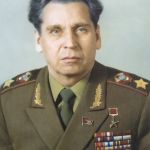
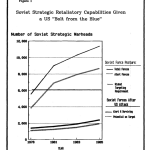
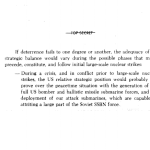
Shall we play a game?
According to the declassified PFIAB item, CIA analysts reported that by 1981 the increasing shift in the strategic balance and the deterioration of the relationship between the US and the USSR led the Soviet leadership to believe there was "an increased threat of war and increased likelihood of the use of nuclear weapons." After Reagan took office in 1981, the Soviet leadership pushed on the USSR's intelligence apparatus to make sure they were ready to act if Reagan did the insane and was preparing a surprise attack.
Yuri Andropov, at that time head of the KGB, told a group of KGB officers in May of 1981 that the US was actively preparing for war against the Soviet Union. He believed in a possible, surprise US nuclear first strike, and his solution was to enhance the RYAN program fast.
Development of the RYAN computer model began in the mid-1970s, and by the end of the decade the KGB convinced the Politburo that the software was essential to make an accurate assessment of the relationship between the USSR and the United States. While it followed prior approaches to analysis used by the KGB, the pace of Western technological advancements and other factors made it much more difficult to keep track of everything affecting the "correlation of forces" between the two sides.
Even if it was technologically advanced, the thinking behind RYAN was purely old-school, based on the lessons learned by the Soviets from World War II. It used a collection of approximately 40,000 weighted data points based on military, political, and economic factors that Soviet experts believed were decisive in determining the course of the war with Nazi Germany. The fundamental assumption of RYAN's forecasting was that the US would act much like the Nazis did—if the "correlation of forces" was decisively in favor of the US, then it would be highly likely that the US would launch a surprise attack just as Germany did with Operation Barbarossa.
The forecast that RYAN spit out was, for all the model's complexity, very simple. The system used the US' power as a fixed scale, measuring the Soviet position as a percentage score based on all the data points. RYAN's model was constantly updated with new data from the field, and the RYAN score report was sent once a month to the Politburo. Anything above a 70 was acceptable, but the experts who built the system believed that a score of 60 or above meant the Soviet Union was safe from surprise attack. Anything lower was bad news.
In 1981, the score was dipping below 60, so Andropov pushed for enhanced data points to be added to RYAN to improve its accuracy. In May, he ordered the creation of a special "institute" within the KGB to develop the additional military intelligence input requirements. "The institute was told—despite protestations for more time—to quickly define the task, develop a plan, and be ready to levy the initial collection and reporting requirements to KGB Residencies [the operations units overseas] by November 1981," the PFIAB report stated.Advertisement
The data points being demanded included:
Details of military operations plans from the US and NATO allies, Japan, and China (which was at the time considered to be allying with the US against the USSR) that indicated preparations for war against the Warsaw Pact;
Plans for how forces would be deployed for war;
Any signs of military mobilization;
Operational doctrine for nuclear attacks;
Political activities surrounding the decision process for launching a nuclear war or other conflict, including consultations between NATO countries over the use of military force, which the KGB considered "one of the states of immediate preparation by the adversary for [surprise nuclear attack];"
Where Air Force One was plus logistical data on its operations and airfields it landed at;
Details on the Federal Emergency Management Agency's nuclear war plans, and details of who was in the order of succession for leadership of the US in event of a nuclear war;
The activity of the National Security Council and Vice President Bush's crisis staff;
And Wall Street and banking activity, the trade in currency and gold, "as well as the movement of high-grade jewelry, collections of rare paintings, and similar items" that might indicate patterns of behavior connected to plans for war.
KGB field officers were not universally excited. Some complained the seemingly arbitrary deadline for the new requirements resulted in data points that were somewhat less sound than they should be. But Andropov and the KGB leadership made those requirements a top priority for all field operations, as well as for the intelligence agencies of its Warsaw Pact allies. They sold this initiative as the need to be out in front of what was seen as an inevitable surprise attack from the West.
Greetings, Professor Falken
However the KGB decided to use these data points, it did not make things better. As soon as RYAN was updated with the new information, it immediately started churning out bad news. This only fueled demand for more and better data to feed the model. In a tasking communique to field officers in the US and Western Europe, KGB headquarters said:
The current international situation, which is characterized by a considerable strengthening of the adversary's military preparations as well as by a growing threat of war, requires that active and effective steps be taken to strengthen intelligence work dealing with military-strategic problems. It is of special importance to discover the adversary's concrete plans and measures linked with his preparation for a surprise nuclear missile attack on the USSR and other socialist countries.
Meanwhile, the Soviet military was working to improve the readiness of its nuclear forces to respond to any surprise attack. Subs in port were told to be ready to launch within three to four hours; those under repair were ordered to be ready within 48 hours. The Soviet Navy started experimenting with launching missiles from pierside in the event of an attack. The Soviet Air Force forward-deployed its Su-24 "Fencer" all-weather bombers to Hungary, Poland, and East Germany to provide a faster nuclear air strike capability near the front lines. And the Red Army pushed nuclear artillery up to the frontier with NATO. If there was to be a confrontation, the military wanted to be ready to go all-nuclear early.Advertisement
It didn't help much that President Reagan had essentially given the US Navy and Air Force carte blanche ability to screw with the Soviets' heads. Soon after being sworn in, Reagan signed off on a series of psychological warfare operations against the Soviet Union. The Air Force flew bombers up over the North Pole and out of bases in Europe and Asia to come close to Soviet airspace then turn off just as they approached the border. The Navy staged multiple operations and exercises in places where the fleet had never gone before, all in close proximity to major Soviet military and industrial sites.
In the summer of 1981, the aircraft carrier USS Eisenhower and an accompanying force of 82 US, Canadian, Norwegian, and British ships used a combination of deceptive lighting and other practices, radio silence, and electronic warfare to sneak through what is known as the Greenland-Iceland-United Kingdom (GIUK) gap and into the North Sea. The initiative even took advantage of cloud cover to evade Soviet satellites. When Soviet maritime patrol planes finally found them, the carrier's fighter wing staged simulated attacks on the "Bear" patrol planes as they were performing in-flight refueling.
All of these details were fed into RYAN, and they made the Soviet Politburo very, very nervous. This sense of dread filtered down. Marshal Nikolai Ogarkov, the chief of the general staff of the Soviet military, called for moving the entire country to a "war footing" in preparation for a complete military mobilization. A lieutenant colonel acting as an instructor at Moscow's Civil Defense Headquarters told civilians that the Soviet military "intended to deliver a preemptive strike against the US, using 50 percent of its warheads," according to the PFIAB report. And the KGB issued an order to all departments of its foreign intelligence arm to increase collection efforts even further, all because there was information indicating NATO was preparing for "a third world war."
With Brezhnev's death on November 10, 1982, the RYAN number likely slipped into the red. Fearing that the US would take military action to take advantage of the shuffling at the top of the Politburo, the KGB and GRU operations in the West were placed on high alert to watch for any military activity. In the Soviet military, no one was sure who had nuclear release authority until Andropov was named as Brezhnev's successor on November 15.
Andropov had a fever for more RYAN, and the KGB responded by creating an entire new workforce in its stations at Soviet embassies in the West dedicated to feeding it. In February of 1983, KGB headquarters sent a cable to its London section chief, telling him that he was being sent a new agent with one job—feeding RYAN military data.
17.02.83Top Secret
Copy No 1
London
Comrade Yermakov
[A. V. Guk]
(strictly personal)
Permanent Operational Assignment to Uncover NATO Preparations for a Nuclear Missile Attack on the USSR
In view of the growing urgency of the task of discovering promptly any preparations by the adversary for a nuclear missile attack (RYAN) on the USSR, we are sending you a permanently operative assignment (POA) and briefing on this question.
The objective of the assignment is to see that the residentura works systematically to uncover any plans in preparation by the main adversary [the United States] for RYAN and to organize a continual watch to be kept for indications of a decision being taken to use nuclear weapons against the USSR or immediate preparations being made for a nuclear missile attack.
The answer is 42
Pretty much everything the Reagan administration and the US military did in 1983—along with some of the things the Soviets thought that they had done—pushed the buttons on RYAN.
In March, President Reagan gave a speech calling the Soviet Union the "evil empire." In a March 23 speech, he announced the Strategic Defense Initiative.
In April, three aircraft carrier task forces consisting of 40 ships conducted FleetEx '83 just off the Kamchatka Peninsula and the Soviet Navy Pacific home base of Petropavlovsk—the Soviet Union's only base with direct access to open ocean. The US Navy conducted antisubmarine warfare exercises in an area known to be a Soviet ballistic missile sub "bastion," where the Red Fleet's Pacific nuclear missile fleet conducted its patrols. And the aircraft carrier air wings staged a simulated bombing run on a Soviet military installation on a disputed island in the Kuril Island chain. In a Congressional hearing following the exercise, Admiral James Watkins testified that the Soviets were "as naked as jaybird there and they know it."
The US posturing led Andropov to warn US envoy Averell Harriman in a June meeting (the "first real meeting between the United States and the Soviet Union since the start of the Administration," a State Department memo noted) no less than four times of the risk of triggering a nuclear war through miscalculation.
On September 1, 1983, Korean Air Lines Flight 007 flew into Soviet airspace and was shot down. The Soviet leadership believed that the jet, which intruded on Soviet protected airspace over the Sea of Japan, was on a spy mission and that it was intended as a deliberately calculated provocation by the US. The outrage from the US and its allies over the shoot-down was seen as proof that Reagan wanted war. A Defense Ministry memorandum to the Politburo put it this way:
We are dealing with a major, dual-purpose political provocation carefully organized by the US special services. The first purpose was to use the incursion of the intruder aircraft into Soviet airspace to create a favorable situation for the gathering of defense data on our air defense system in the Far East, involving the most diverse systems including the Ferret satellite. Second, they envisaged, if this flight were terminated by us, [the US would use] that fact to mount a global anti-Soviet campaign to discredit the Soviet Union.
In October, the US invaded Grenada and attacked Cuban troops there assisting the leftist regime.
And starting in September, NATO staged its annual series of elaborate war games known as Autumn Forge, culminating in a nuclear war game called Exercise Able Archer '83. It began with a massive airlift of 16,000 US troops to Europe on 139 flights, all under radio silence. The Soviets had never seen anything like it.
One of thousands of tanks deployed to Europe as part of Reforger '83, one of the opening exercises of Autumn Forge.
The flight path of Korean Airlines Flight 007, shot down by Soviet fighters.
CIA
The Greenland-Iceland-United Kingdom (GIUK) Gap, through which a 1982 joint NATO fleet, including a carrier task force, slipped through undetected by Soviet surveillance, unnerving the Soviet leadership.
A timeline of Autumn Forge 83 prepared by the National Intelligence Archive, culminating with Able Archer 83.
A soldier relaxing during an exercise simulating chemical-biological attack during Autumn Forge 83.
A summary of the timeline of the Able Archer '83 exercise from a NATO report.
An after-action report on the "silent crossing" by US air transports delivering 16,000 troops at the opening of Autumn Forge 83.
Previous SlideNext Slide
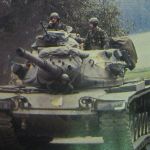
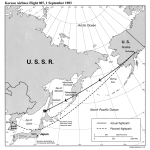
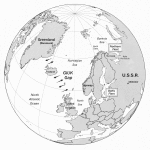
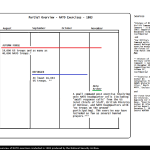
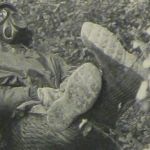
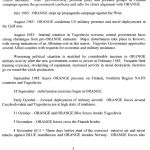
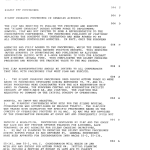
As if all the tension wasn't enough, on September 26, 1983 the Oko early warning system reported twice that US ballistic missiles had been launched. Lt. Colonel Stanislav Petrov, the watch officer in the Soviet Air Defense Forces' command bunker outside Moscow that night, made a gut call that the launch warnings were a malfunction. (It was later determined the warnings were caused by the way the sun bounced off high-altitude clouds). If Petrov had followed procedures in place, Andropov would have been alerted of a nuclear launch and an immediate launch of ICBMs would have been ordered.Advertisement
During this period, the RYAN score dropped precipitously. A report from early in 1984 placed the RYAN score at 45; it may have dipped even lower during the fall of 1983. Any numbers in this range would have likely pushed Soviet paranoia to the edge.
DEFCON 1
In the US, Autumn Forge was not seen as being particularly provocative. The exercises had been going on for years. But the combination of the new tactics being used in the exercises and the overall political climate, when converted to data points, tilted the RYAN model toward a forecast of mushroom clouds.
Some KGB operatives objected to the analyses that they kept getting back from headquarters of the situation—being more familiar with how the West operates, they believed there was no evidence that there was an actual plan to launch a surprise attack. "None of the political reporting officers who concentrated on RYAN believed in the immediacy of the threat—especially a US surprise attack," the PFIAB report records. Two field officers in London complained to their station chief about the disconnect in Moscow, telling him that the station might be partly to blame because of the "alarmist reports on the West's military preparations, intensified ideological struggle, and similar themes to satiate Moscow's demands for RYAN reporting."
In fact, the demand for "raw" intelligence rather than analysis—in a system that placed political incentive for even more alarming raw data—was at the root of the "war panic" that reached its peak with the beginning of Able Archer '83, the culmination of the Autumn Forge exercise. Over 40,000 NATO troops were on the move across Europe under command using encrypted communications and often operating under radio silence.
Given all the weird inputs that the model was getting and the Soviet leadership's predisposition to believe the worst of Reagan to begin with, the Politburo ultimately decided that Able Archer was, in fact, a cover for an actual surprise nuclear attack. They began acting accordingly.
By the summer of 1983, the general population of the Soviet Union was being prepared for war. Air raid drills were held at factories. Andropov sent a letter to Communist Party organizations telling them that there was no chance things were going to get better with the US. The Red Army was held back from participating in the agricultural harvest. And on September 29, as Autumn Forge rolled forward, Andropov issued a public "declaration."
The Soviet leadership deems it necessary to inform the Soviet people, other peoples, and all who are responsible for determining the policy of states, of its assessment of the course pursued in international affairs by the current US administration. In brief, it is a militarist course that represents a serious threat to peace.... If anyone had any illusion about the possibility of an evolution for the better in the policy of the present American administration, recent events have dispelled them completely.
Much of the intelligence detailing what the Soviets did as part of this extremely high level of alert during Able Archer remains classified. But the Soviet military initiated a massive intelligence collection push with air, ground, and naval signals and photographic intelligence operations.
At the same time, there was a complete stand-down of all other flight operations as aircraft were made ready for combat. Helicopters ferried nuclear warheads to be loaded into weapons and aircraft. Missile and air forces were put on a round-the-clock 30-minute alert. Soviet strike fighter-bombers in East Germany and Poland were loaded with nuclear weapons. About 70 SS-20 missiles were put on ready alert with warheads loaded. And ballistic missile subs were ordered to disperse from port beneath the Arctic ice cap in preparation for an incoming attack. All of this took place during a major Soviet holiday—the anniversary of the October revolution, not a time usually reserved for military exercises.Advertisement
Around November 8, Oleg Gordievski warned British intelligence that the Kremlin was close to pressing the button. But the next day, Andropov (already in questionable health) became seriously ill and dropped out of the public eye. Three months later, he would die of renal failure. As Andropov became incapacitated, there was near panic that this would be the moment the US was waiting for to strike. At the same time, there was confusion over who could actually order a pre-emptive nuclear strike in his absence. The Soviet leadership had never completed provisions for the military acting in the absence of political control.
On November 11, after testing new procedures for signaling authority to launch a nuclear attack and walking NATO forces up from normal readiness to a simulated General Alert (DEFCON 1) and a full-scale simulated release of nuclear weapons, Able Archer '83 concluded. Thus, the Soviets ended their alert, but the general mood of the Soviet leadership would not change until 1985 when Mikhail Gorbachev became General Secretary.
In a June 1984 memo, CIA Director William Casey forwarded intelligence uncovered about the war scare to the White House. The degree to which the world was put at risk was apparently enough to convince President Reagan to break somewhat from the confrontational foreign policy toward the Soviet Union he had pursued during his first term. In January 1984, he delivered a speech calling for peace with the Soviet Union and the dismantling of all nuclear weapons.
The recalibration of this approach led to the summits between Reagan and Gorbachev in Geneva in 1985 and Reykjavik in 1986. Ultimately, the two rivals restarted talks of strategic arms reduction.
How about a nice game of chess?
The RYAN program, in many ways, was symptomatic of the decline of the KGB in the early 1980s as it became more bureaucratic and corrupt. The war scare merely sealed its fate, and the agency lost its preeminent position among the Soviet intelligence agencies. It was supplanted by the GRU, which remains the main intelligence directorate of the Russian Federation today.
But RYAN is also a dramatic example of how analytic systems can lead their users astray. It adds resonance to the types of fears that WarGames (and Terminator a year later) tapped into—that artificial intelligence connected to weapons of war could be a very bad thing.
While we haven't exactly hooked up a WOPR or Skynet to the ballistic missile network quite yet, the intelligence community of the US has increasingly turned to machine learning, expert systems, and analytics to drive its identification of targets of interest. Recent artificial research by Google has demonstrated how machine learning systems can go wrong when fed random data, finding patterns that aren't there—a behavior they called "inceptionism." Imagine, then, if an artificial intelligence system started looking into the emptiness of its data feed and started seeing enemies everywhere.
Perhaps we should remember Operation RYAN the next time there's a conversation about letting autonomous systems control weapons—no matter what the caliber. Maybe we should all have AI stick to chess for a while longer.
SEAN GALLAGHER - 11/29/2020
SEAN GALLAGHERwas previously Ars Technica's IT and National Security Editor. A former Navy officer, systems administrator, and network systems integrator with 20 years of IT journalism experience, he lives and works in Baltimore, Maryland.EMAIL sean.gallagher@arstechnica.com // TWITTER @thepacketrat
SEAN GALLAGHERwas previously Ars Technica's IT and National Security Editor. A former Navy officer, systems administrator, and network systems integrator with 20 years of IT journalism experience, he lives and works in Baltimore, Maryland.EMAIL sean.gallagher@arstechnica.com // TWITTER @thepacketrat
No comments:
Post a Comment